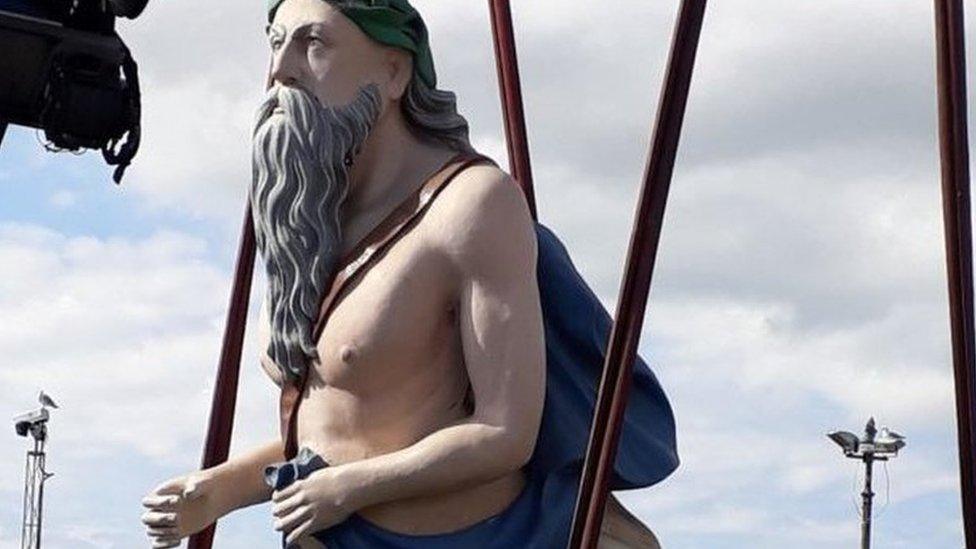Soundwaves used to restore naval ship figureheads
- Published
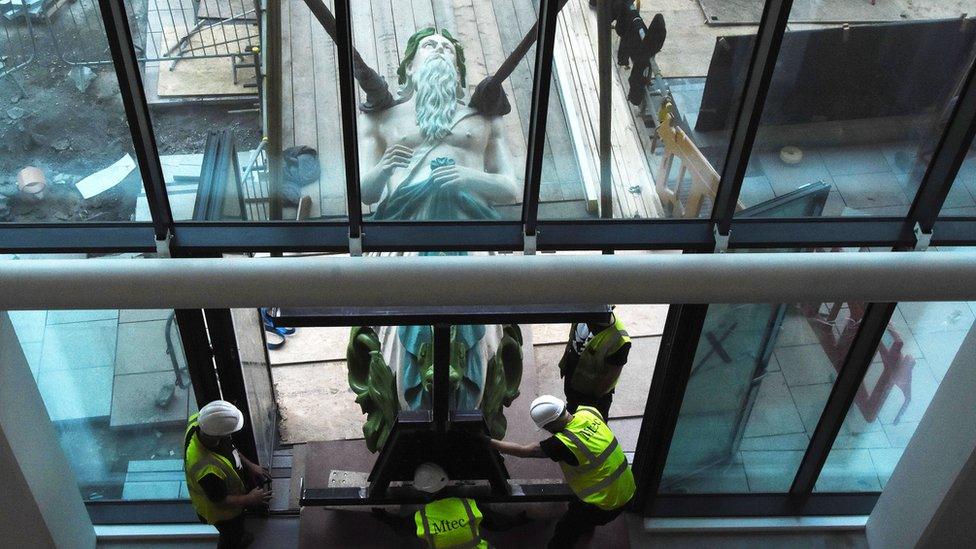
HMS Tamar was carefully brought inside his new home at The Box, Plymouth
Soundwaves were used to save fourteen decaying Royal Naval ship figureheads.
The wooden sculptures were built for naval warships in the 19th Century and are set to go on display at a museum and gallery in Plymouth, Devon.
Conservation teams spent more than two years restoring them after years of water damage led to rot and decay.
On loan from the National Museums of the Royal Navy, they will hang in the entrance of The Box for public display next spring.
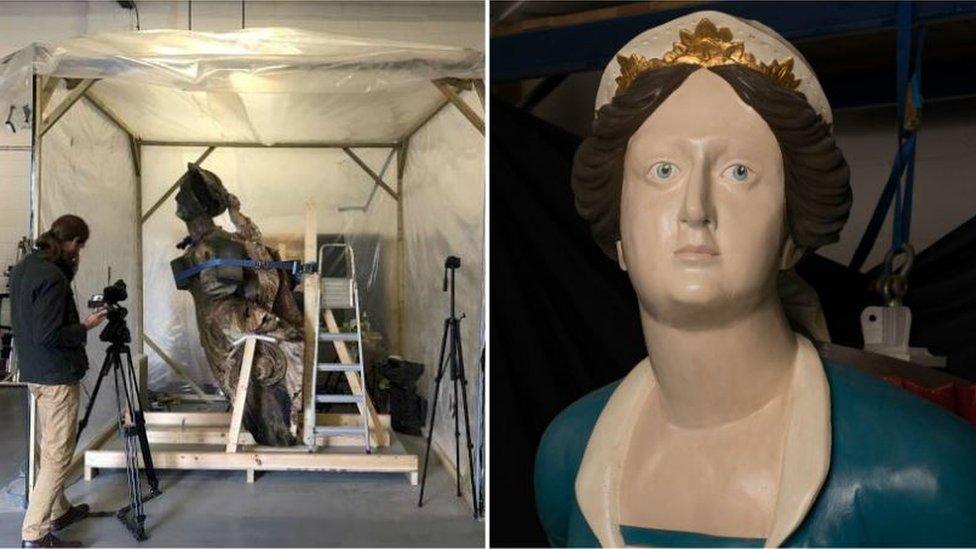
HMS Topaz was one of the most badly damaged figureheads
Conservator Hans Thompson from Orbis Conservation, which restored six of the figureheads, said the team knew "some were going to be pretty bad".
"The difficulty was initially trying to develop an analysis technique so we could have a good understanding of the structural capabilities of each figurehead," he said.
The team used soundwaves and a series of sensors placed around the statues to measure the level of rot inside - a technique more commonly used by tree surgeons.
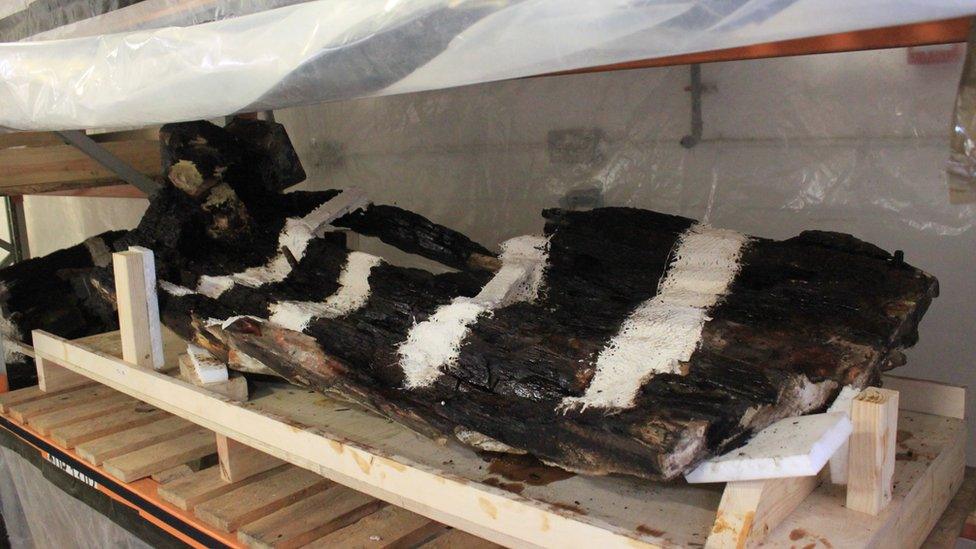
HMS Tamar while going through the controlled drying process. The inside of some of the figureheads was so severely damaged it resembled saturated compost
Mr Thompson said the wood inside some of the sculptures was so rotten "you could scoop it out with your hand".
He said the figureheads were not "far away from being completely lost".
"There used to be thousands of figureheads but now but now this collection of 14 represents quite a large percentage of the naval figureheads that remain", he added.
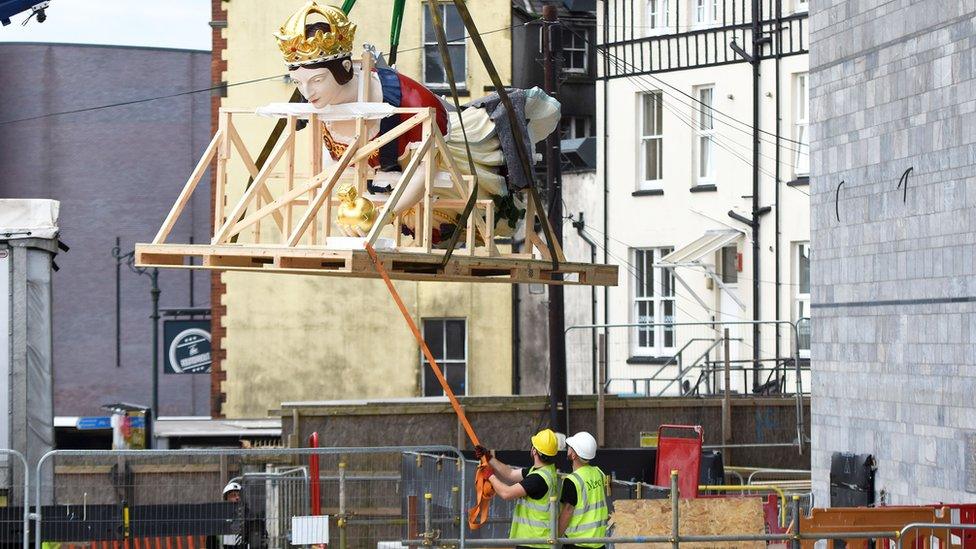
The wooden sculptures have been restored over a two-year period and are now being placed in their new home in Plymouth
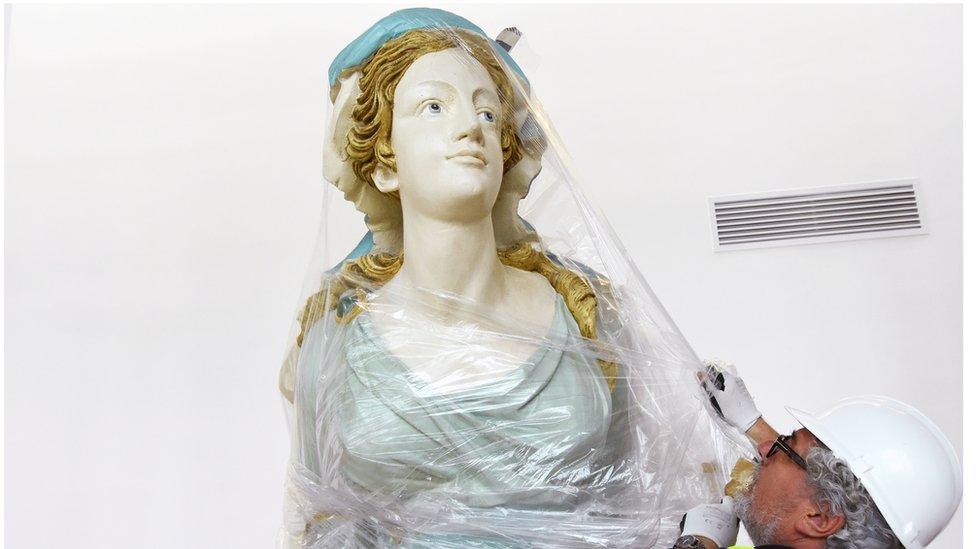
Once the structural integrity of each sculpture was restored the teams then had the task of repainting the figureheads
- Published29 April 2019
